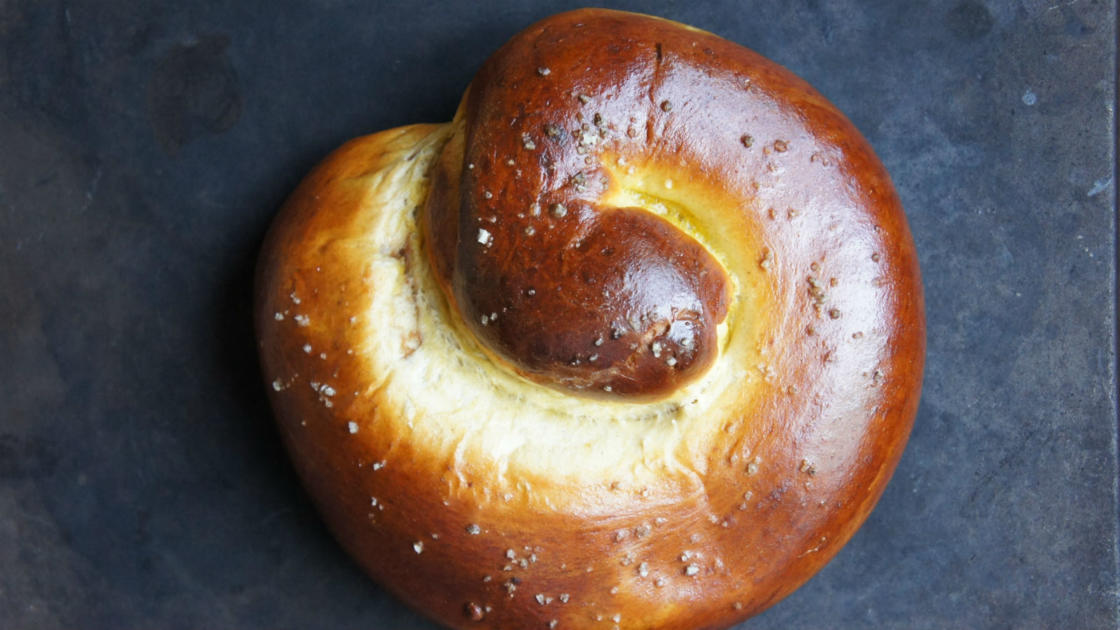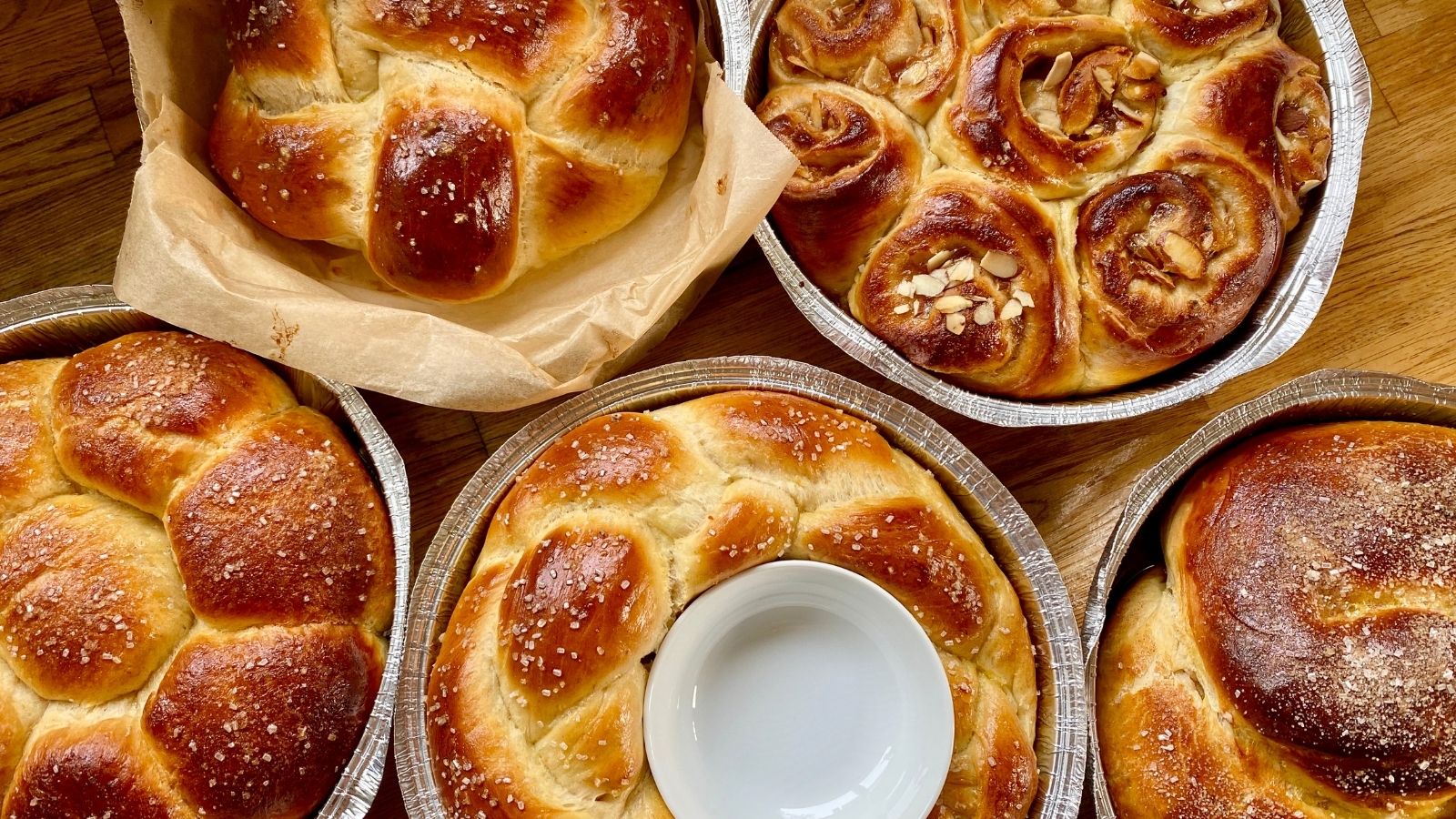Round challah — it’s different from regularly braided challah. And because most of us only make round challah for the High Holidays, we usually get less practice perfecting it.
So I gathered up all of the frequently asked questions about round challah shaping, baking, and storing, and I am answering them below.

Question: How can I avoid my round challah being dense/doughy on the inside?
The Nosher celebrates the traditions and recipes that have brought Jews together for centuries. Donate today to keep The Nosher's stories and recipes accessible to all.
This is the most frequently asked question. Round challah tends to be stacked on top of itself, making it a bit denser than usual. And I want to say in full transparency: I also struggle with this. Here are a few tips to try:
- Use less flour in your dough – less is more.
- Make sure to give your challah a good second rise. After it is shaped, make sure it sits for 30-40 minutes before baking. This will add lightness to your loaf.
- Bake it for a little longer to ensure it’s baked through in the middle. If you usually bake your challah for 24 minutes, add another 2-3 minutes to start, check it, and if it still needs to bake more, pop it back in immediately for 1-2 more minutes.
- To check to see if its baked through, you can turn the loaf over and knock on it – if it sounds hollow, it should be baked through. Or if you are fancy and precise, the internal temperature should read 165 degrees F.
Question: Can I replace the sugar in my recipe with only honey?
No, I would not advise replacing the sugar 1:1. I would suggest instead to replace half the sugar with honey, and add another 1-2 Tbsp of flour to balance the extra liquid.
Question: If you add honey into your egg wash, does it change the baking time?
No, it does not change the baking time to add a touch of honey to your egg wash. That being said, if you don’t like a rich, darker sheen, I would not suggest adding honey to the egg wash. Sugar caramelizes in the oven, and it will make the outside of your challah darker, but some people really like that look and taste.
Question: What’s the difference between using bread flour and all-purpose flour?
Bread flour is better for, well, making bread because it has a higher protein content, which is better for producing gluten. All-purpose is aptly named because it can be used for many purposes: cakes, cookies, cooking, and bread, too. If you cannot find or do not have bread flour, all-purpose will work just fine. But if you are looking to take your challah game up a notch, I definitely recommend getting your hands on some good quality bread flour (I recommend King Arthur bread flour).
Question: Can I make the dough the night before and let it rise in the fridge?
Absolutely! The next morning when you are ready to start shaping it, allow it sit out at room temperature for one hour. If you don’t take this step, your challah may end up too dense/undercooked in the middle.
Question: What’s the best way to store already baked challah?
Allow the challah to cool completely before wrapping. This may require it to sit for several hours. Wrap in foil tightly and then store in a sealable plastic bag.
Question: What’s the easiest way to shape a round challah?
Roll your dough into one long strand. Form it into a spiral, wrapping it around itself, and then tuck the end under slightly. Boom, round challah.
For more on making round challahs, check out my recent Zoom class, which you can watch in its entirety on YouTube.



